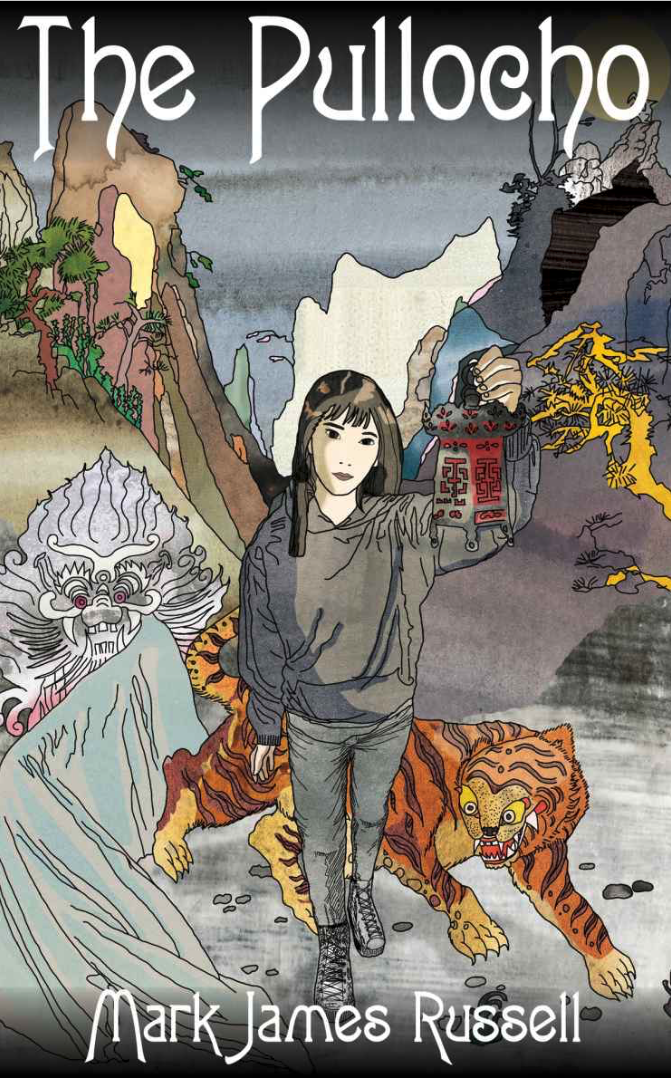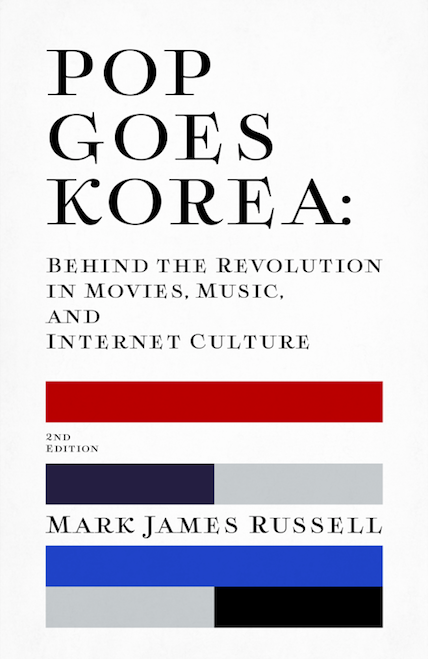- North Korean officials in China affiliated with recently-executed Jang Song-thaek are on the run, in hiding. (Korea JoongAng Daily)
- The distressing state of illegal dog-breeding in Korea — 95% of breeders unlicensed, and most of them are terrible. (Korea JoongAng Daily)
- Meet Latin America’s Teenage Korean Pop Fanatics. Fun to read about the trend from a non-Korean source. (NPR)
- Ian Buruma restates his old (and good!) argument that the US presence in East Asia spurs nationalism and instability. But this time, he combines the argument with the dynastic element of East Asian politics, looking at the leaders of Korea, China, and Japan and noting how their policies have been influenced by their fathers (or, in Abe’s case, grandfather). (Project Syndicate)
- Are “It” bags on the way out in Korea? An argument that fashion is maturing, shifting to classics and style instead of just brand-names and following. (Korea JoongAng Daily)
- The Hobbit: The Desolation of Smaug was easily No. 1 last weekend in Korea, but still fairly soft with just 6.6 billion won ($6.3 million) in box office. (KOBIS) In related news, The Hobbit: The Desolation of Smaug is terrible.
- Oh, Jeon Do-yeon’s moronic new film (did you know it’s bad to be a drug mule) The Way Back Home was second, with 4.5 billion won.
- With two weekends left in the year, the box office in Korea has already set an attendance record (over 199 million tickets, and will top 200 million for the first time later today), nearly a revenue record (at 1.450 trillion won, it will beat last year’s record in a couple of days), a major record for Korean movies (118 million admissions), and is 4 million admissions shy of a foreign film record. It is also the second-strongest year for Korean movies ever by percentage, with 59.2% of the box office going to local movies (more KOBIS).
Category: Fashion
As you have probably heard, one of Korea’s most famous fashion designers Andre Kim (born Kim Bongnam) has passed away. There are many stories on the Internet, including this one and this one. Some pictures of Andre here.
For years, Andre was best known to too many people for his strange personal style, in the big white outfit with the painted-on hair. (I quite like this photo, showing Andre shopping at a silk shop):
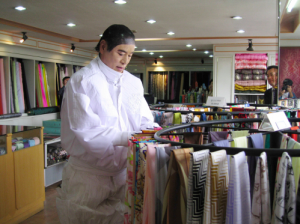
But in fact, back in the 1960s and ’70s, he was a rather dashing dude. Plus his clothes were great.
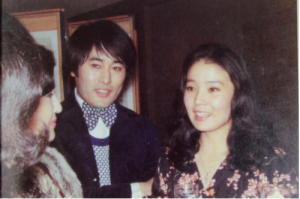
For the past 20 years or so, Andre concentrated on a pretty ornate, spectacular style:
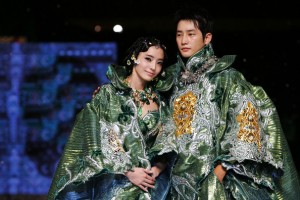
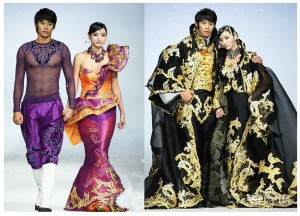
But, while always somewhat theatrical, Andre’s fashions started out much more reserved. If you want to get a sense of what his fashions were like originally, here is a video from 1963 featuring a fashion show of his in the Bando Hotel (starts about halfway through).
– Here is an Andre Kim fashion show from Christmas 1964 (it is the whole video).
– In this video of a Pierre Cardin fashion show from 1981, you can see Andre himself, still looking elegant, sitting with Patti Kim at around the 15 second point.
– Here is an Andre Kim show from 1987. By this point, he had discovered his signature white, puffy outfit (at 43 sec).
(Btw, I could only get those videos to play on Firefox).
Anyhow, very sorry to hear about Kim’s passing. He was a really important figure in Korea’s fashion and art world for a long, long time.
UPDATE: I just found Antti Leppanen’s old post about Andre Kim. Great post! Lots of information about why Andre changed his name (two times) and his role in the Shindonga “clothing lobby” scandal of 1999.
A very interesting article in the New York Times today on Seoul Fashion Week and the trends and big ideas in Korean fashion in general. The general theme of the article is on how style in Korea is so different between men and women — men being elegant, women being very girlie. I am not sure if I agree, but it is definitely a good read.
Some choice bits:
Once you get past the bright-colored girlie girls, what really stands out in Seoul is the chic, bordering on the obsessively refined, look of the Korean young men, from college kids and young professionals in their early 20s to men in their 40s.
I really like this quote from fashion blogger Hong Sukwoo:
“Young Koreans haven’t found their own style yet, so they’re copying images they find on the Internet,” he says. “It’s a form of stylish cosplay.”
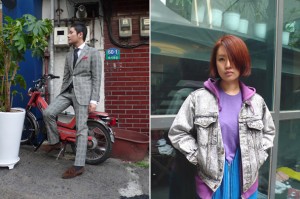
Hong Sukwoo on Korea's style divide
And then there was this comment from fashion designer Juun J.:
“There needs to be a revolutionary generation of women’s designers to come out and lead women into something new,” he said. “Designers in their early 20s are still learning, and they’re the ones who will do it.”
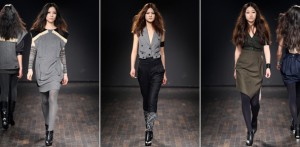
Johnny Hates Jazz - from Seoul Fashion Week
As someone who remembers Korea in the mid-1990s, honestly I do not find Korea’s rise in the fashion world that surprising. Even if the clothes and general style were not so hip back in the day, even then Koreans put a lot of energy and thought into their appearance. And from time to time, when I met students who were studying fashion (usually in Daegu), they were invariably much more interesting than the average Yonsei or Seoul National University egghead.
How much did the rise of Korean pop culture lead the fashion industry and how much did it follow? Or was it even caused by the fashion industry? I will let braver (and more fashionable) people than myself offer their theories. I suspect the two are intertwined.
But the biggest plus of these changes, in my humble opinion, is how the rise of fashion has led to diversity. Sure, Korea remains one of the most incredibly trendy places for fashion I have ever seen (from Burberry coats of the late 1990s to the mushroom hairdos of a year or two ago). But you do see a lot more variety than you used to. Beauty may be only skin deep, but individuality goes to the core.
* * *
As long as I am on the subject of style in Korea, I really should point out the great magazine GRAPHIC. It has been around since 2006, but last year it went bilingual. Sadly, you cannot download the magazine online, but you can buy it online and have it shipped to you.
If you are looking for a sign of how far Korean design has come, GRAPHIC magazine is really revealing. Tellingly, it is an independent magazine, without government money or major sponsors (which are usually behind the curve on art and culture, and rarely really “get it”). Plus it is just a great magazine for anyone interested in typography and graphic design.
